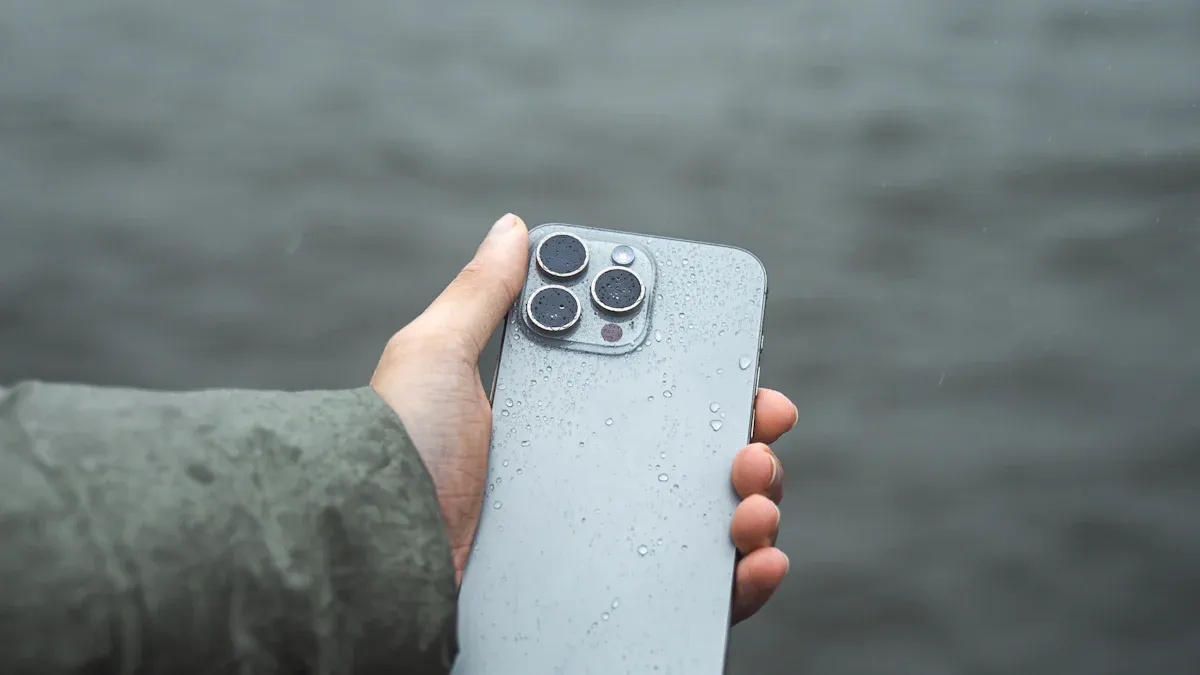
Setting up a waterproof Tunnel telephone does not have to feel difficult. With a few checks, anyone can install a reliable IP Tunnel telephone or Öffentliches Tunneltelefon. Strict approval steps and quality standards help each emergency Tunnel Telephone keep water out, even when surface roughness could affect leaks.
What You Need for a Waterproof Tunnel Telephone

Essential Tools and Equipment
Setting up a waterproof Tunnel telephone in 2025 requires the right tools. These tools help make the installation process smooth and safe. Here is a handy table with the most important equipment and their specifications:
| Specification Category | Details |
|---|---|
| Product Type | Weatherproof Speed Dial Industrial Tunnel Telephone |
| Power Input | 12-24V DC |
| Network Ports | RJ45 ports for SIP connection (WAN/LAN 10/100Base-T RJ-45, Auto MDIX) |
| Weatherproof Rating | IP67 (dust and moisture resistant) |
| Material | Die-cast aluminum casing with epoxy powder coating; Cycoloy handset, stainless steel cord |
| Certifications | CE, FCC, RoHS compliant |
| Installation | Wall-mounted, simple procedures |
| Additional Features | Vandal-resistant handset, shrill warble tone, electronic/magnetic hook switch |
A power drill, screwdriver set, and measuring tape also come in handy during installation.
Required Materials and Parts
The right materials and parts keep the waterproof Tunnel telephone working in tough tunnel conditions. Aluminum alloy die-casting shells protect the phone from impact and corrosion. Installers use silicone sealant and heat-shrink tubing to keep water out of wiring. Weather-resistant screws and mounting brackets hold the phone in place. All parts should meet CE, FCC, RoHS, and ISO9001 certifications. These certifications show the phone can handle dust, water, and vibration.
Tipp: Always check that the telephone unit and all parts have the correct certification labels before starting the installation.
Safety Gear Checklist
Safety comes first when working in tunnels. Installers should wear:
- Hard hats
- Safety goggles
- High-visibility vests
- Insulated gloves
- Steel-toed boots
A multimeter helps check for live wires before touching any cables. Proper safety gear protects workers from falling objects, electrical hazards, and slips.
Preparation for Waterproof Tunnel Telephone Installation
Inspect the Tunnel Installation Site
Before anyone installs a waterproof Tunnel telephone, they should check the tunnel site carefully. Workers look for cracks, water seepage, or loose surfaces. These problems can make the installation unsafe. They also check if the telephone will fit securely on the wall. A good inspection helps prevent accidents and keeps the phone working well. Many teams use a checklist to make sure they do not miss any steps.
- Examine the tunnel walls for damage or leaks.
- Test the area for moisture or weak spots.
- Confirm there is enough space for the telephone and wiring.
- Make sure the site meets structural and safety standards.
Note: Regular tunnel inspections by certified professionals help keep everyone safe and ensure the tunnel is ready for new equipment.
Mark the Mounting Locations
After the inspection, workers mark the exact spot for the telephone. They use measuring tapes and non-permanent markers to get the height and alignment right. This step helps avoid pipes, cables, or other equipment already in the tunnel. Careful marking means the waterproof Tunnel telephone will be easy to reach and use in an emergency.
- Measure the height from the tunnel floor.
- Mark the center point for the mounting bracket.
- Double-check that the spot does not block other systems.
Ensure Safety and Compliance
Safety and compliance matter at every step. Workers follow local and national rules, such as FCC and OSHA standards. These rules cover wiring, insulation, and emergency plans. Only trained and certified people should install tunnel telephones. They use safety gear like hard hats, gloves, and high-visibility vests. Teams also check that all materials, like cables and brackets, meet weatherproof and electrical codes.
- FCC rules require proper wiring and insulation.
- OSHA standards demand safe work zones and emergency plans.
- National Tunnel Inspection Standards call for certified inspectors and detailed records.
🛡️ Always use certified equipment and follow safety rules to protect workers and keep the communication system reliable.
Step-by-Step Waterproof Tunnel Telephone Installation

Mount the Telephone Unit Securely
Mounting the telephone unit is the first big step. Workers start by double-checking the marked location. They use a power drill with masonry bits to create holes in the tunnel wall. Weather-resistant screws hold the mounting bracket in place. The bracket must sit flat against the wall, so a spirit level helps keep everything straight. After that, they attach the waterproof Tunnel telephone to the bracket. The unit should not wobble or shift. A stable mount keeps the phone safe from bumps and vibrations.
Tipp: Always use weather-resistant screws and bolts. These prevent rust and help the phone last longer in damp tunnel environments.
Connect the Telephone Wiring
Wiring comes next. Workers strip the insulation from each wire using wire strippers. They follow the manufacturer’s wiring diagram to connect the telephone to the tunnel’s communication system. The solder and lock screw method creates a strong, waterproof connection. This technique uses high-refined copper contacts and ensures low contact resistance—less than 3 milliohms. After connecting, they check the voltage and continuity with a multimeter. Heat-shrink tubing covers exposed wires, protecting them from moisture and dust. This step is important for reliable communication, even in tunnels with high humidity or temperature swings.
| Feature/Metric | Description/Value |
|---|---|
| Wiring connection technique | Solder and lock screw method |
| Protection level | IP68 (waterproof, suitable for tunnels) |
| Current rating | 10A |
| Operating voltage | 300V |
| Withstand voltage | 2500V for 1 minute |
| Contact resistance | Less than 3mΩ |
| Insulation resistance | Greater than 500MΩ |
| Durability | At least 500 mating/unmating cycles |
| Temperature rating | -40°C to 80°C |
Seal All Entry Points for Waterproofing
Sealing is what makes the installation truly waterproof. Workers apply silicone sealant around the mounting edges and any exposed wiring. This creates a watertight barrier. They also inspect the telephone casing to make sure all factory seals are intact. Some models, like those with an IP67 rating, need less extra sealing because of their robust design. Heat-shrink tubing adds another layer of protection for the wiring. These steps keep water, dust, and debris out of the waterproof Tunnel telephone, even during heavy rain or tunnel cleaning.
🛡️ A good seal means fewer repairs and a longer-lasting phone. Regular checks help spot worn seals before leaks start.
Secure the Installation with Tamper-Resistant Hardware
The last step is to secure everything with tamper-resistant hardware. Workers tighten all screws and bolts, making sure the unit cannot be easily removed or tampered with. The best waterproof Tunnel telephone models use vandal-resistant screws and a die-cast aluminum body. These features protect the phone from theft, vandalism, and harsh tunnel conditions. The hardware also resists corrosion and keeps the phone stable for years.
| Feature | Description |
|---|---|
| Material | Robust aluminium alloy die-cast body |
| Tamper Resistance | Vandal & tamper-resistant hardware |
| Waterproof Rating | IP66 (standard), up to IP67 (highest rating) |
| Environmental Suitability | Designed for harsh environments: tunnels, metro, railway, power plants, marine, offshore |
| Certifications | FCC, CE, RoHS, and other international safety standards |
| Additional Features | Magnetic reed hook-switch, lightning protection, noise-canceling microphone, silicon keypad |
A final inspection checks that the phone is secure, waterproof, and ready for use. This careful process ensures the communication system will work when it matters most.
Testing and Maintaining Your Waterproof Tunnel Telephone
Test the Telephone Functionality
After installation, every team should test the waterproof Tunnel telephone to make sure it works. They can pick up the handset and listen for a dial tone. If the phone uses a speed dial feature, pressing the emergency button should connect to the control room. Workers should also check the speaker and microphone by making a short call. If the sound is clear and the call goes through, the phone is ready. Sometimes, teams use a checklist to record each test result. This helps track any problems and keeps the system reliable.
Inspect and Maintain Waterproof Seals
Keeping the waterproof seals in good shape protects the phone from water and dust. Teams should follow a regular inspection routine:
- Inspect the seals and casing every six months.
- Clean the unit and check all wiring connections.
- Look for cracks or worn gaskets and replace them right away.
- Apply new silicone sealant around brackets and exposed wires once a year.
- In tunnels with high humidity, spray metal parts with anti-corrosion spray.
- Store extra gaskets and screws for quick repairs.
🛠️ Regular inspections help prevent leaks and keep the phone working during emergencies.
Set Up a Regular Maintenance Schedule
A good maintenance schedule keeps the waterproof Tunnel telephone in top condition. Teams should mark inspection dates on a calendar and keep records of each check. They can use a simple table to track when they last cleaned, sealed, or tested the phone. This habit helps spot small issues before they become big problems. When everyone follows the schedule, the tunnel stays safe and connected.
Installing a waterproof Tunnel telephone takes planning and care. Teams who follow these steps create a safe and strong communication link in any tunnel. Regular checks help spot problems early. Want a system that lasts for years? Keep up with maintenance and enjoy peace of mind.
FAQ
How often should someone check the waterproof seals?
They should check the seals every six months. Regular checks help prevent leaks and keep the tunnel telephone working during emergencies.
Can a waterproof tunnel telephone handle extreme temperatures?
Yes, most models work from -40°F to 176°F. They keep working in both freezing and hot tunnel environments.
What should a team do if the phone stops working?
First, they should check the power and wiring. If the problem continues, they should contact the manufacturer or a certified technician for help.


